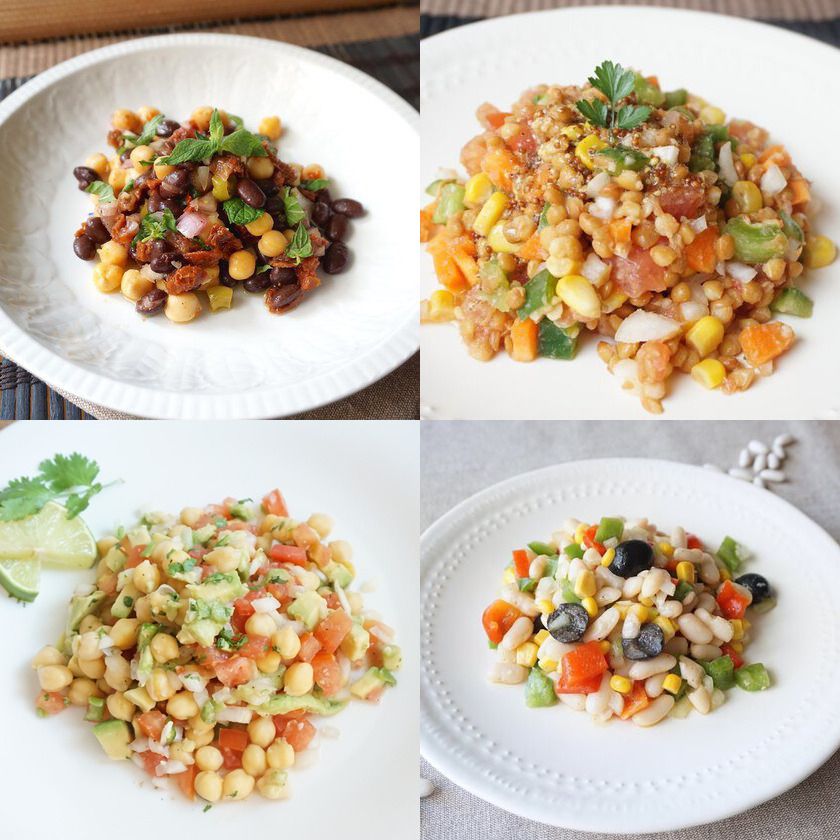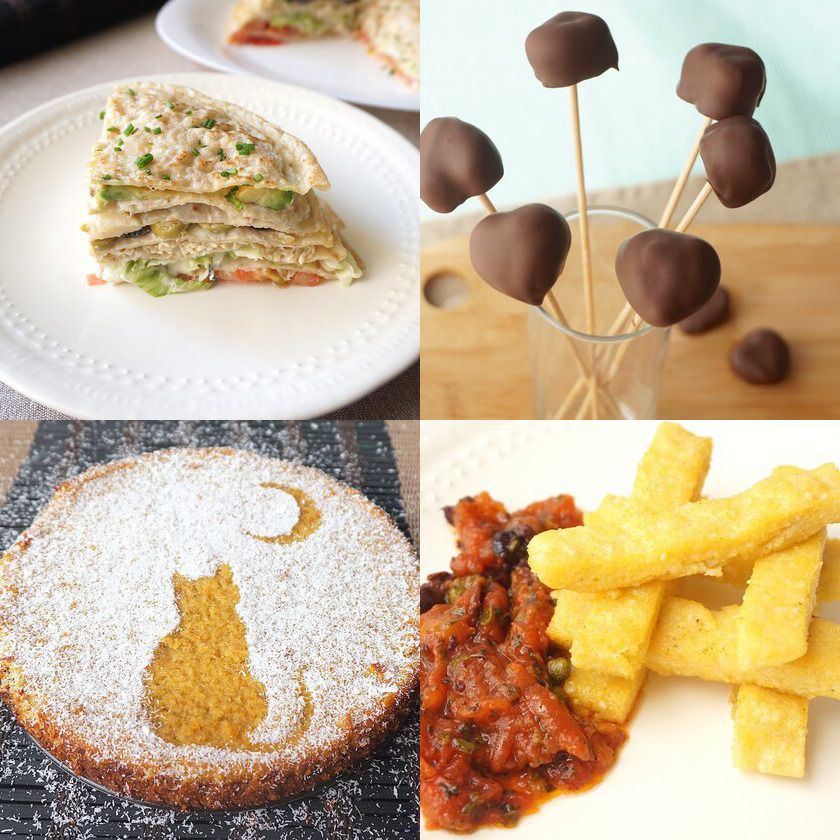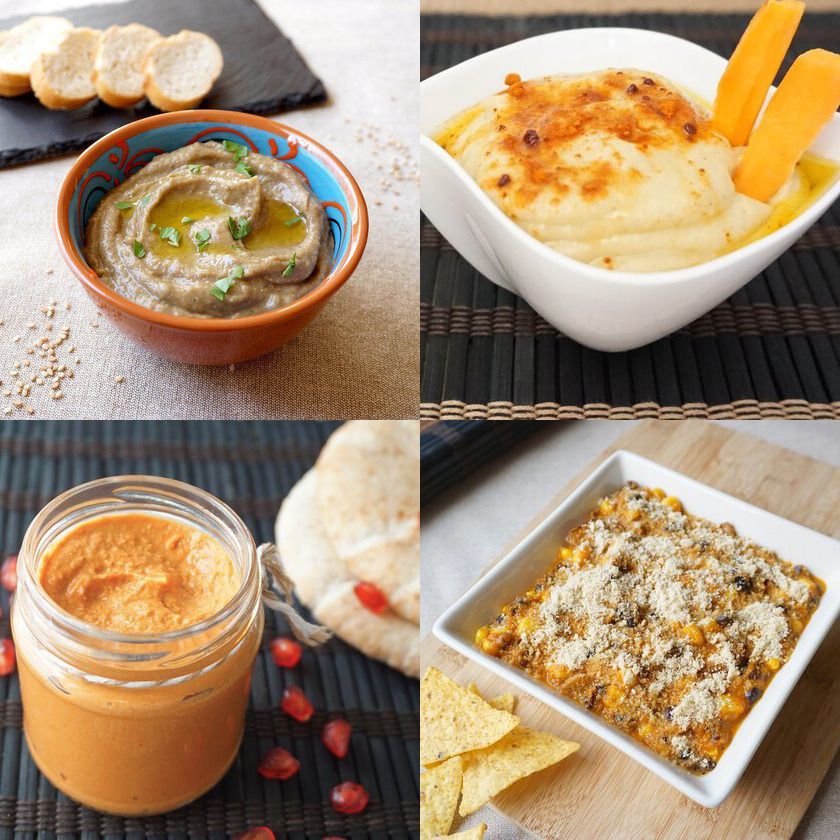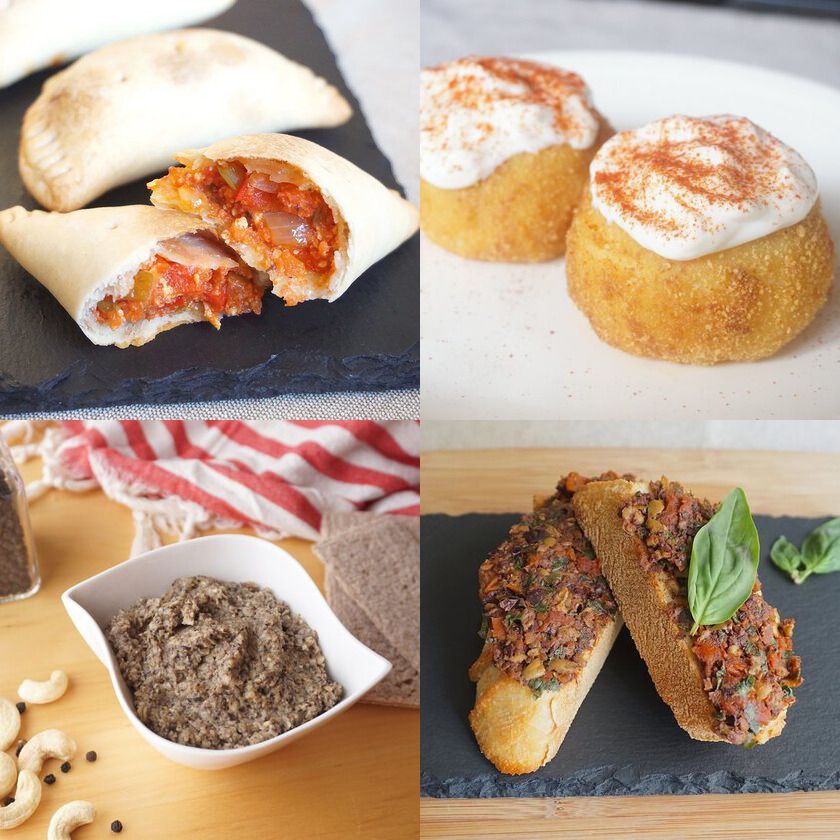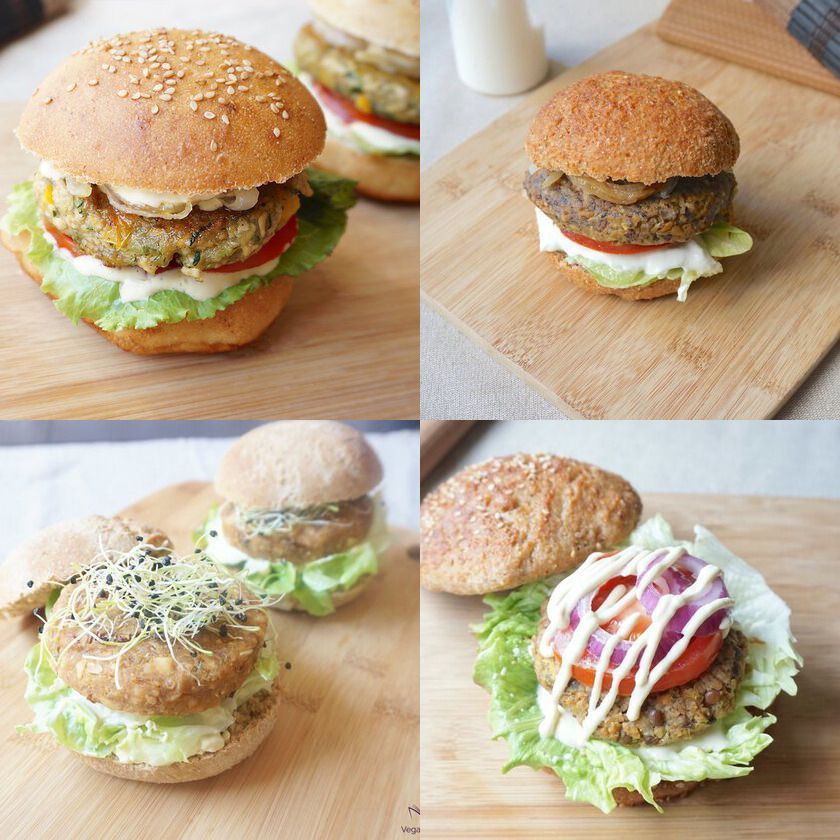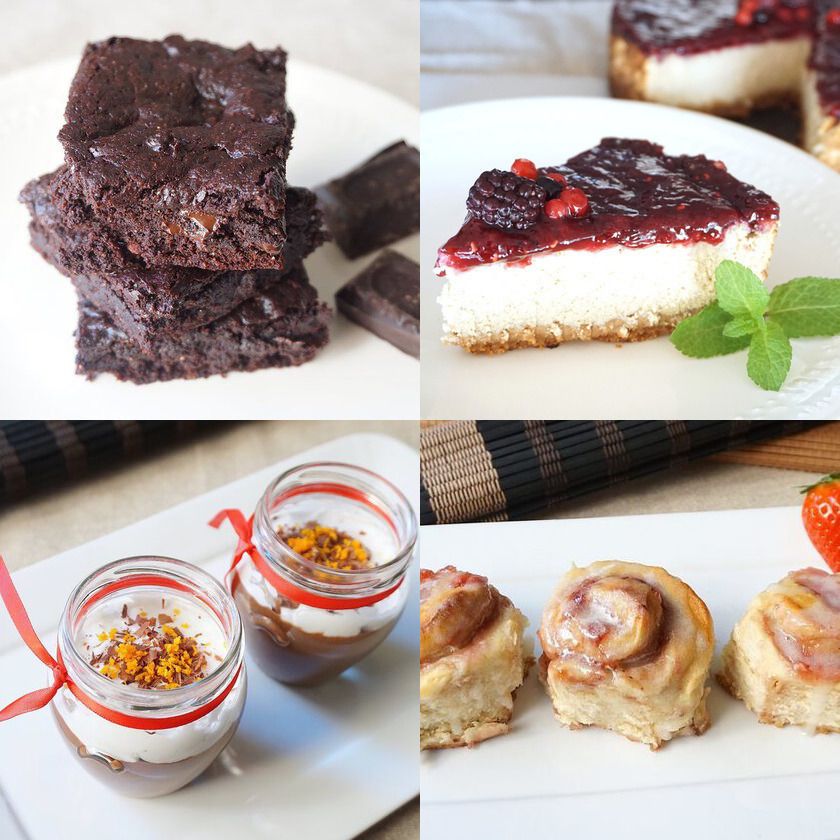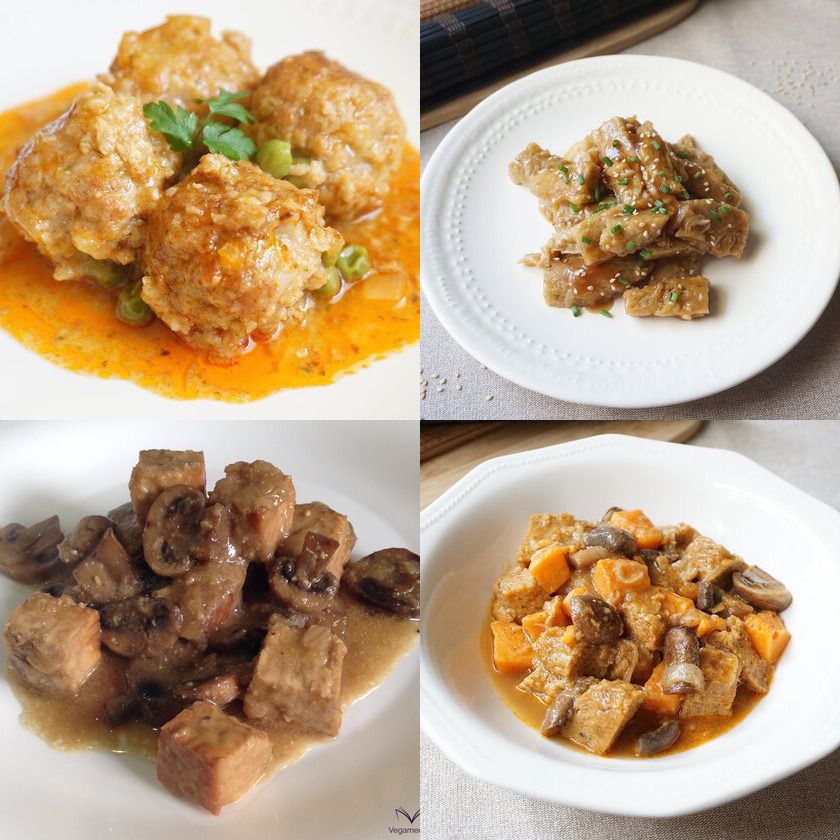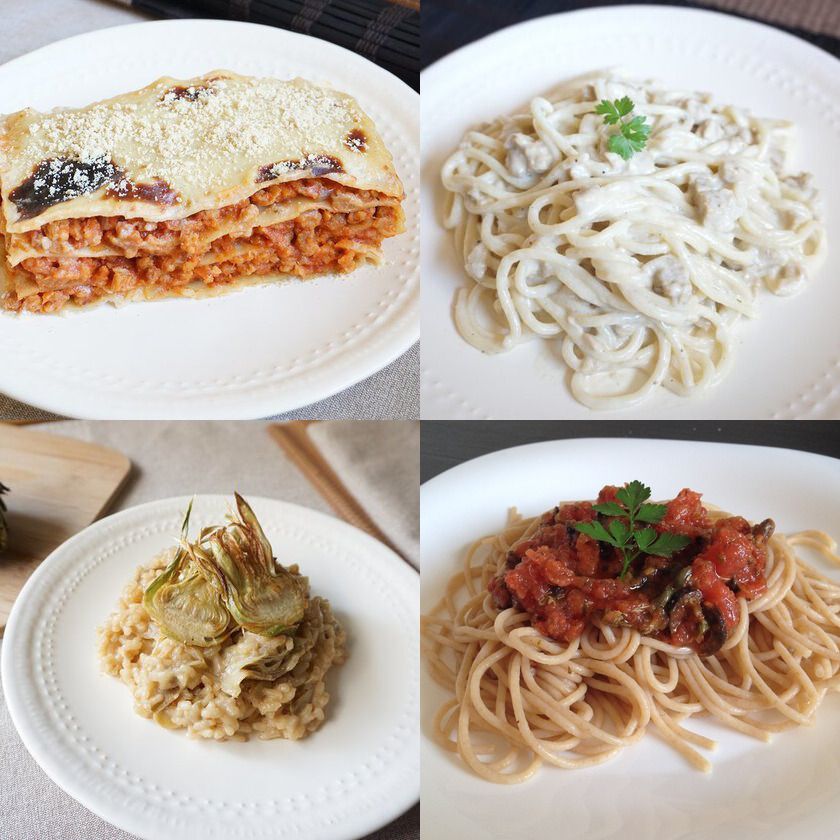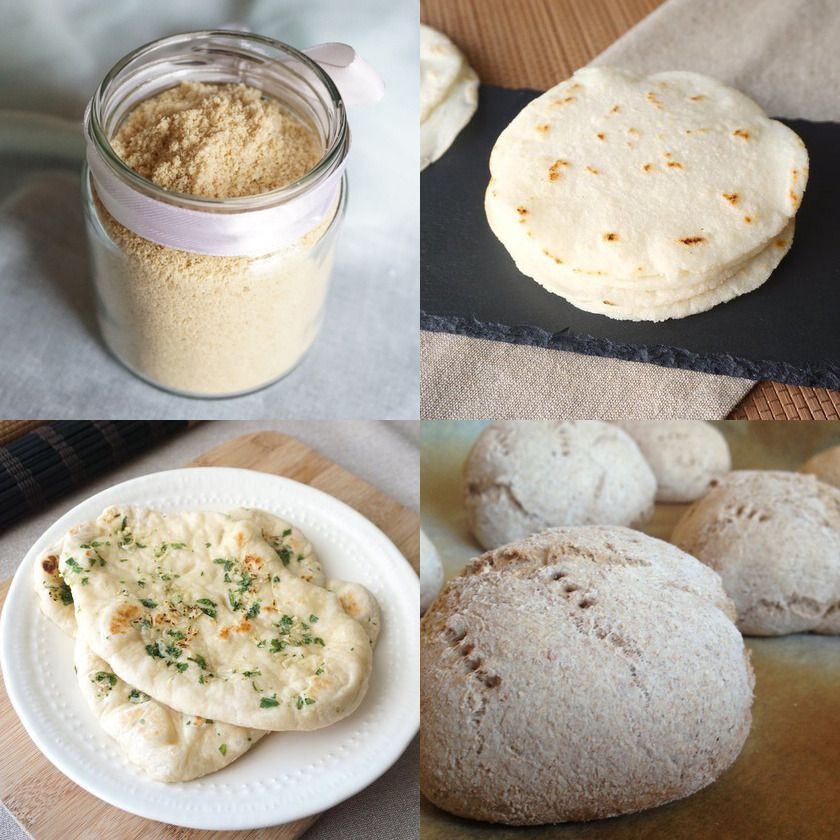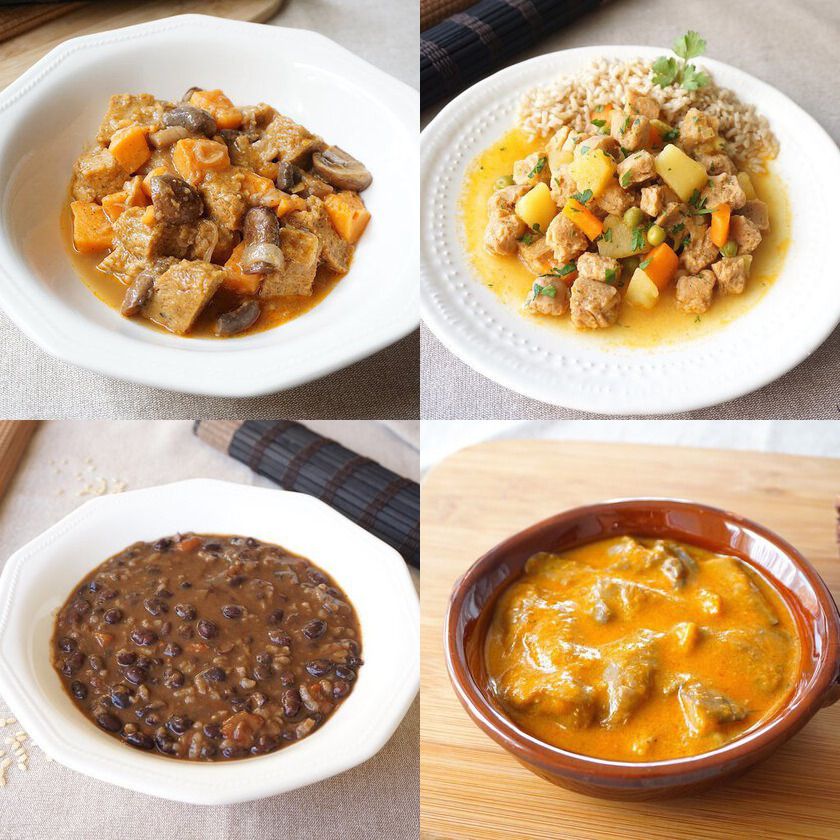
With the arrival of the summer solstice there is also the St John's eve, celebrated on June 23 with bonfires (to pay tribute to the sun, combat the few hours of darkness of the shortest night and purify the sins) and with the typical "coca de Sant Joan", which we will teach you how to make in this recipe.
Etymologically speaking, it is believed that the name 'coca' (originally 'cóc') comes from the Latin verb 'coquere', which means cooking / cooking, although it is also said that it could come from the same verb but in its Germanic version (cook in English, koch in German, kok in Dutch, kock in Swedish ...), from which derive, in turn, terms like 'cake' or 'kuchen' ('tarta' in English and German, respectively). This lack of consensus regarding the etymological origin could be due to the massive migrations of Germanic peoples to the rest of Europe, which gave rise to the current diversity of Germanic languages due to contact with Latin.
As for its presentation, although initially the shape of the St John's cake was round to simulate the sun on the summer solstice, over the years it began to give oval shape, and this is how it has reached our days.
Here we tell you how you can get this spectacular St John's cake free of ingredients of animal origin so that you can show it with as much pride as they did in the past, when they were exhibited looking for the admiration of the neighbors on the way from home to the workshop where the they took to cook.
| Difficulty level | Preparation time | Rations |
| Difficult | 2 h. | For 10 servings |
* Plus 2 and a half hours of rest
Ingredients
- 150 ml. soy milk
- 270 gr. strength flour
- 50 gr. whole cane sugar
- 35 ml. extra virgin olive oil (Arbequina or royal variety)
- 20 gr. fresh yeast
- skin zest of 1 lemon
- 1 teaspoon orange blossom water
- 250 gr. orange vegan pastry cream
- 250 gr. cherries in syrup
To decorate
- whole cane sugar
- 25 gr. pinion
- candied fruit
Instructions
- Grated lemon peel and mixed with sugar.
- In a bowl, we mix the soy milk, the oil and the orange blossom water. We remove and add the yeast, mixing until it dissolves.
- In another bowl, sift the flour and add the mixture of sugar and lemon zest, stirring everything to be well mixed.
- Gradually pour the liquid mixture into the bowl where we have the flour with the sugar and lemon zest and we are kneading.
- When we see that the dough no longer sticks in the hands, we put a little flour on the surface where we are going to work and we continue kneading it until we see that there is a thin and elastic mass. We make a ball, put it in a greased container, cover it with transparent film and let it rest for 2 hours.
- After this time, we preheat the oven to 180º and, meanwhile, remove the dough from the container (you will see that it has grown quite a bit) and pass it from one hand to the other several times, giving it a ball shape again. We put vegetable paper on the surface on which we will work, we break the ball in two (one piece a little bit bigger than the other), we extend the larger half with the help of a roller and we give it an oval shape.
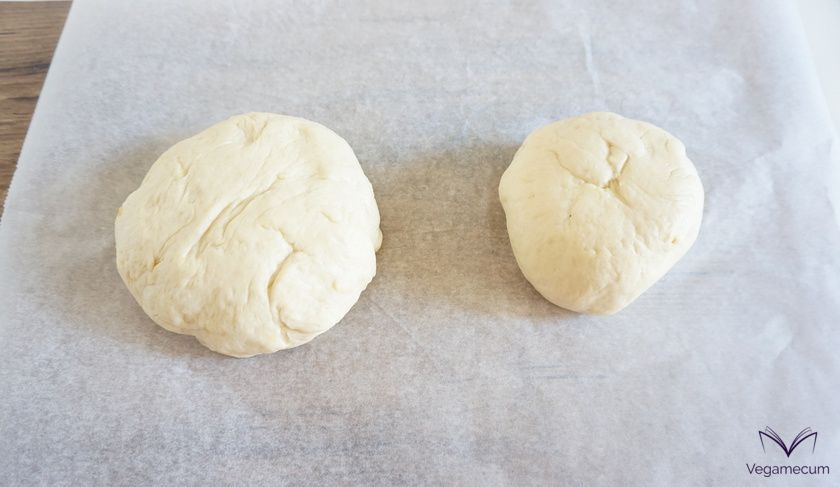
Masa partida en dos (un trozo un poquito más grande que el otro) - With the help of a spatula or spoon, we pour half of the orange cream over the dough, cover with the cherries cut in half without many gaps between them (leaving a free margin to be able to seal well later) and add a little more cream on top.
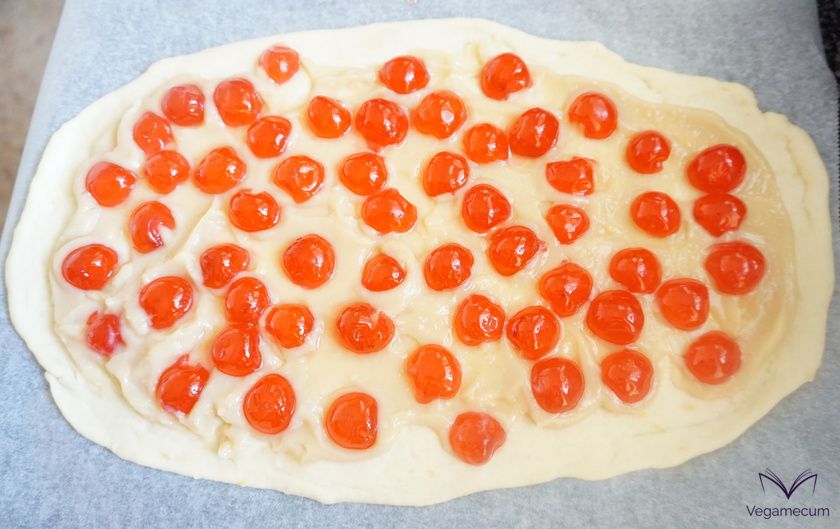
Trozo de masa más grande extendido y cubierto con crema y cerezas (antes de volver a echar más crema) - We knead the other half of the dough with an oval shape, roll it into it to transport it and place it very carefully on the other half of the cream and cherries.
- We press the edges of the two halves against each other to seal them well and let them rest for half an hour.

Coca rellena, cubierta y sellada - After this time, we decorate the coca with the candied fruit, the pine nuts and the sugar. Then we put in the oven and let it cook for 15 minutes at 180º, making sure that it does not burn.
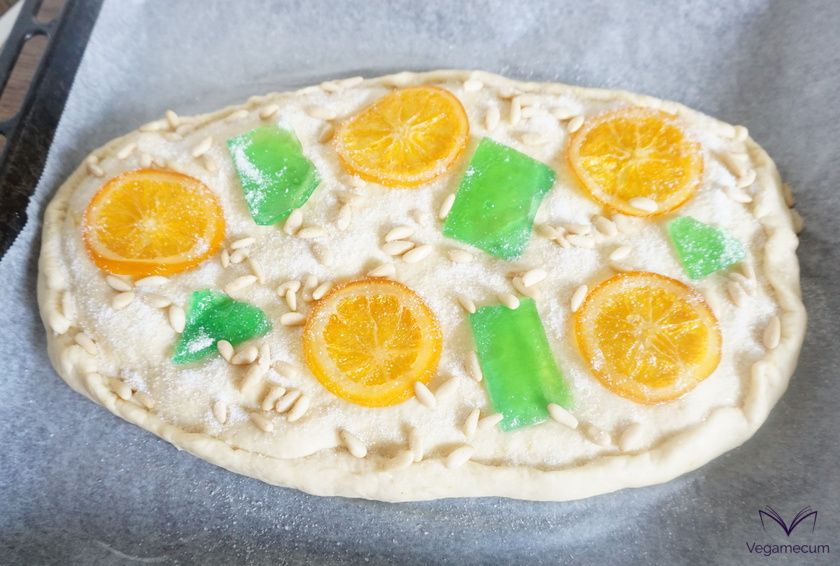
Coca decorada con fruta confitada, piñones y azúcar - We take out of the oven and let it cool to room temperature.
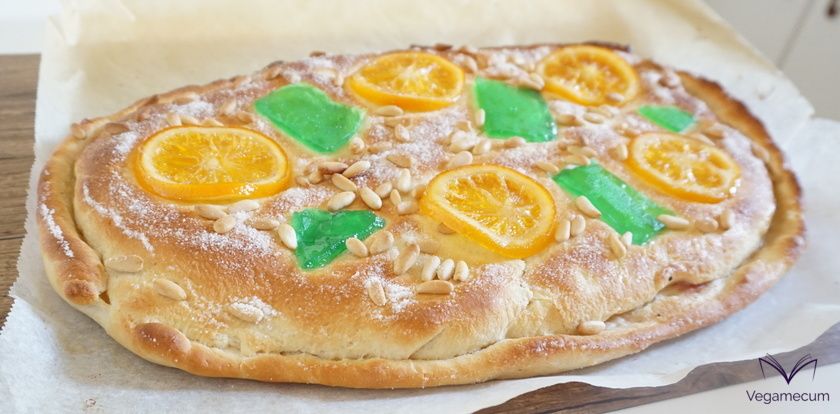
Notes
- You can substitute soy milk for any other vegetable drink.
- Check that the cherries in syrup do not carry the additive E-120, since it is of animal origin (cochineal).
- When kneading, try to avoid adding too much flour for a fluffy texture
If you have any questions, you can leave it to us in the comments. And if you dare and want to show your creations to the world, do not hesitate to label us, we will love to see them through the networks!
Do you join us on social networks? You will find us on Facebook, Twitter, Instagram and Pinterest!

